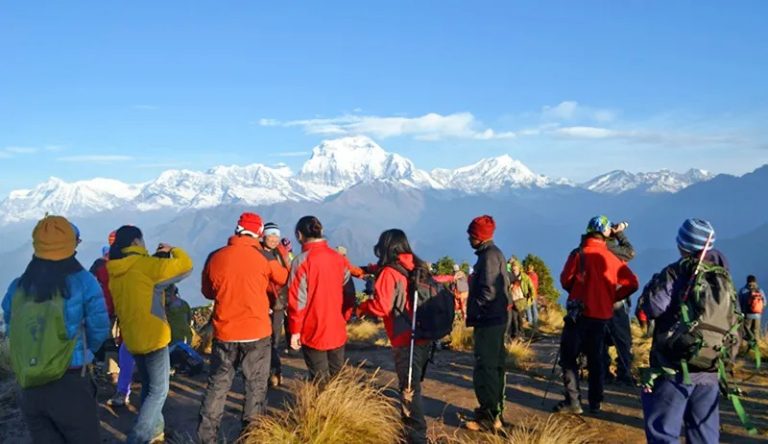Nepal welcomed only 1.2 million international tourists in 2024, falling far short of its target to attract over 2 million visitors annually. Despite major investments in roads, airports, and tourism services, the country’s growth in foreign tourist numbers has stalled.
Back in 2020, Nepal launched the “Visit Nepal 2020” campaign with the goal of reaching 2 million international arrivals. However, the COVID-19 pandemic halted global travel and disrupted the campaign. Six years later, tourism has recovered worldwide—but Nepal’s numbers remain stuck.
Tourism experts are raising questions: Why isn’t Nepal attracting more visitors, even with its rich culture, natural beauty, and improved facilities?
One key reason is weak air connectivity. According to Shraddha Shrestha, Senior Manager at the Nepal Tourism Board, the country’s biggest barrier is limited airline capacity. Nepal’s main airport—Tribhuvan International Airport (TIA)—is overcrowded and often criticized for poor management.
While two new international airports have been built, they are not yet fully functional. As a result, most international flights still depend on TIA, which struggles to meet demand. With few Nepali airlines flying internationally, tourists are forced to rely on expensive foreign carriers.
This limited supply of flights has made travel to Nepal costly and less attractive. Competing destinations like Vietnam or Sri Lanka offer better airline access and cheaper fares, making them more appealing to international travelers.
Road travel within Nepal adds another layer of difficulty. Poor road conditions between Kathmandu and popular spots like Pokhara and Butwal make it hard for tourists to explore the country easily. In addition, Nepal’s domestic air safety record has drawn global attention for the wrong reasons, with several high-profile crashes in recent years.
Despite having 142,233 tourism-related establishments—including hotels, lodges, homestays, and restaurants—the average occupancy rate was just 40% last year. This shows that while Nepal can host more visitors, demand simply hasn’t matched its supply.
The low tourist turnout also reflects outdated promotional methods. According to Yubika Bhandari, General Secretary of the Nepal Association of Tour and Travel Agents, Nepal is behind in using digital marketing tools like influencer partnerships and social media campaigns.
Countries that actively promote themselves using modern channels are attracting more travelers, while Nepal relies heavily on traditional advertising. This gap in marketing strategy is costing Nepal valuable tourism revenue.
Political issues also harm the country’s reputation. Frequent strikes and unstable governance often make global headlines, giving potential tourists second thoughts. Nepal has yet to build a strong public relations framework to counteract this negative image.
Interestingly, the official tourist arrival figure only includes those who arrive by air. Many Indian tourists travel by land, and if these visitors were included, the total count might already cross 2 million. However, air arrivals are a key metric for measuring international accessibility—and Nepal is clearly falling behind in this area.
Both Shrestha and Bhandari agree on one core issue: the lack of reliable and affordable air connectivity is the biggest hurdle for Nepal’s tourism growth. Until this is resolved, even the country’s world-class mountains, culture, and experiences may not be enough to draw the number of visitors it hopes for.
Nepal has the capacity. Now it needs the access.


